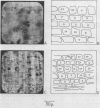Abstract
The low temperature exotherms (LTE) of 1-year-old twigs of Haralson apple (Malus pumila Mill.), shagbark hickory (Carya ovata [Mill.] K. Koch), green ash (Fraxinus pennsylvanica Marsh), honey locust (Gleditsia triacanthos L.), American chestnut (Castanea dentata [Marsh] Borkh.), and red oak (Quercus rubra L.) were determined by differential thermal analysis (DTA). In one type of experiment freezing during a DTA experiment was halted for up to 2.5 hours after part of the supercooled water had frozen at temperatures between −25 and −42 C. Upon resumption of cooling the freezing started within 2 C of the stopping temperature. In a second type of experiment living and dead cells were microscopically observed in the same ray after partial freezing in the DTA apparatus. In another experiment, the LTE persisted even after tangential and radial sectioning of the twig to 0.13 millimeters. In a final experiment the LTE of a single multiseriate ray of red oak had the same shape as the LTE of wood with many uniseriate rays.
These experiments confirm that the deep supercooled water in woody xylem or pith freezes in numerous independent events over a span of as much as 20 C. The units which freeze in an event are single cells or small groups of cells. Ice grows very slowly if at all from these units, and water moves very slowly from unfrozen cells to frozen ones. Deep supercooling of ray parenchyma does not require an intact ray.
Full text
PDF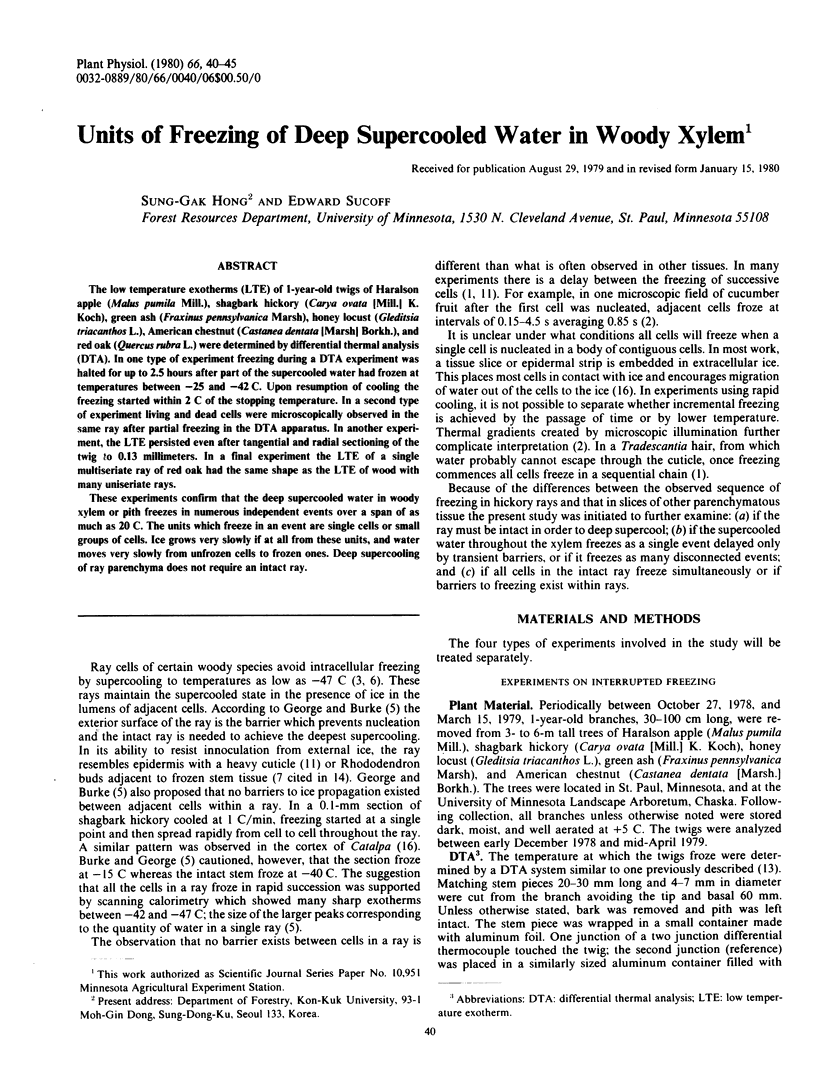

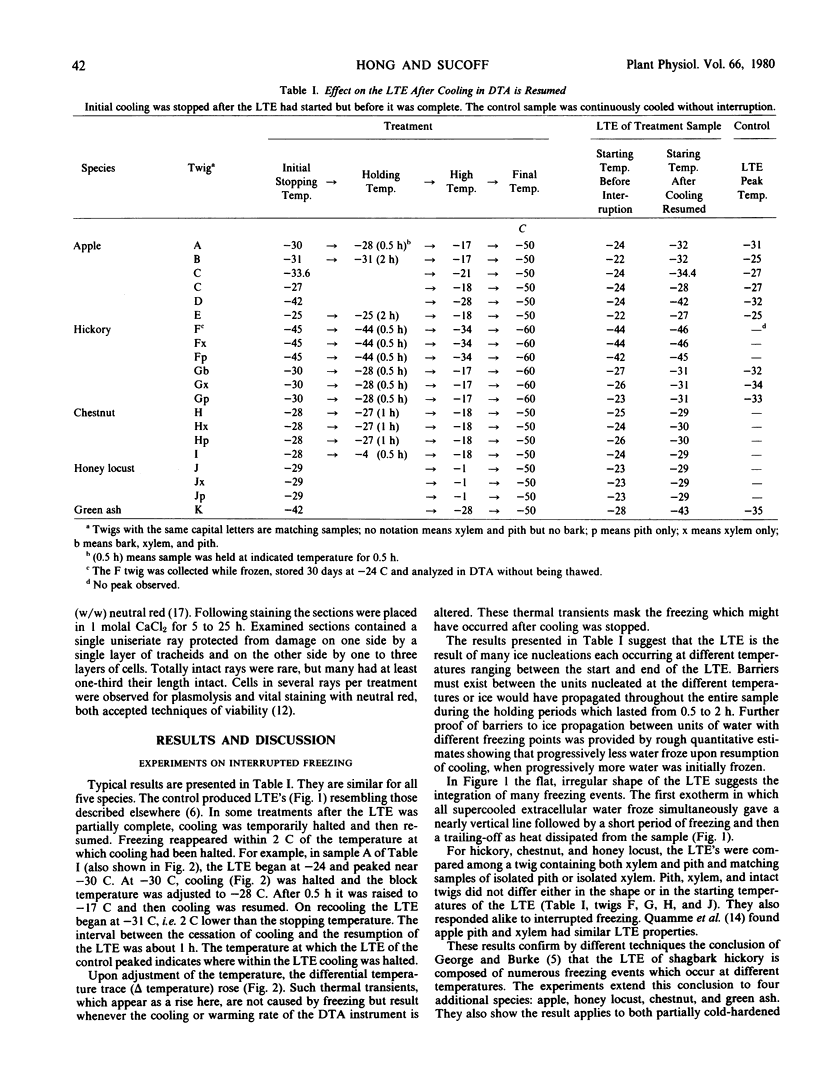
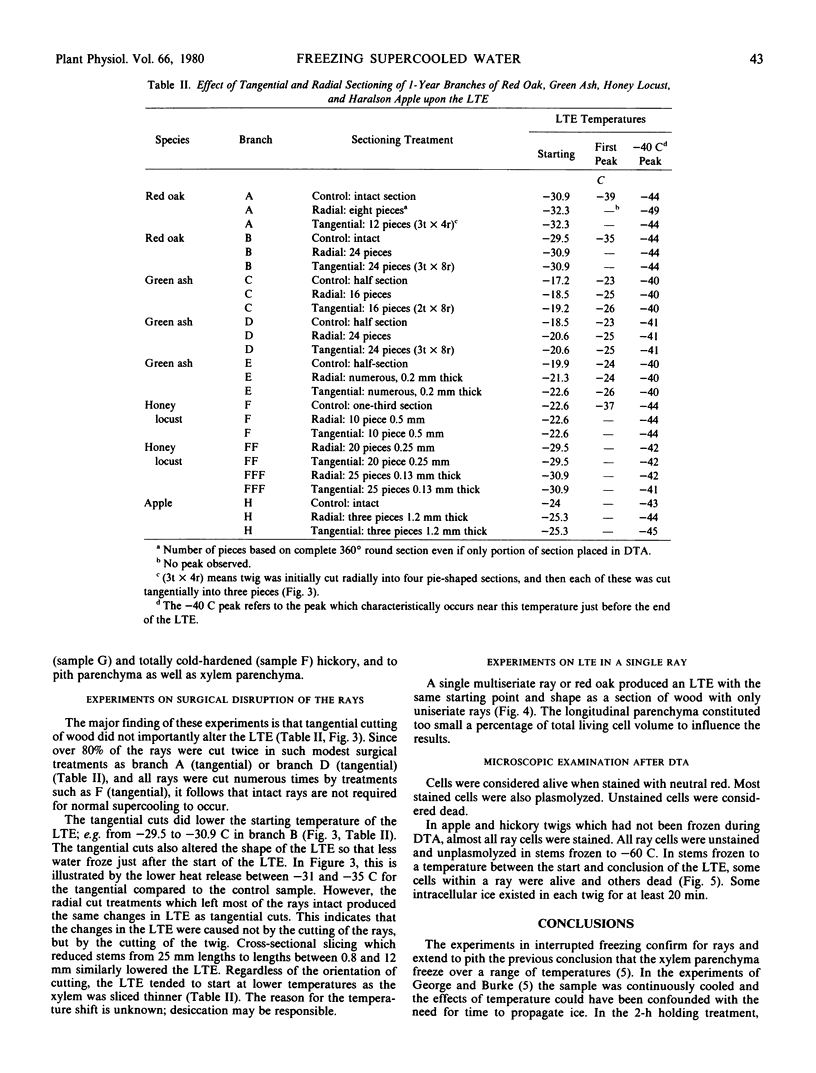
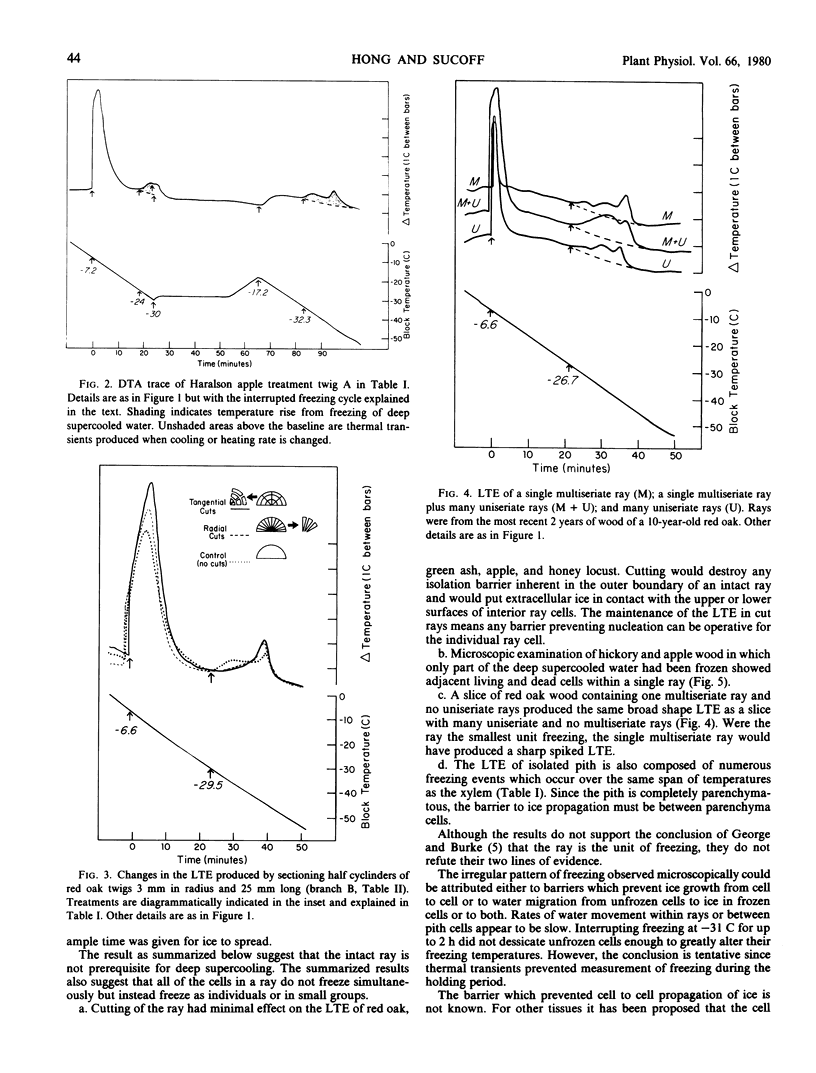
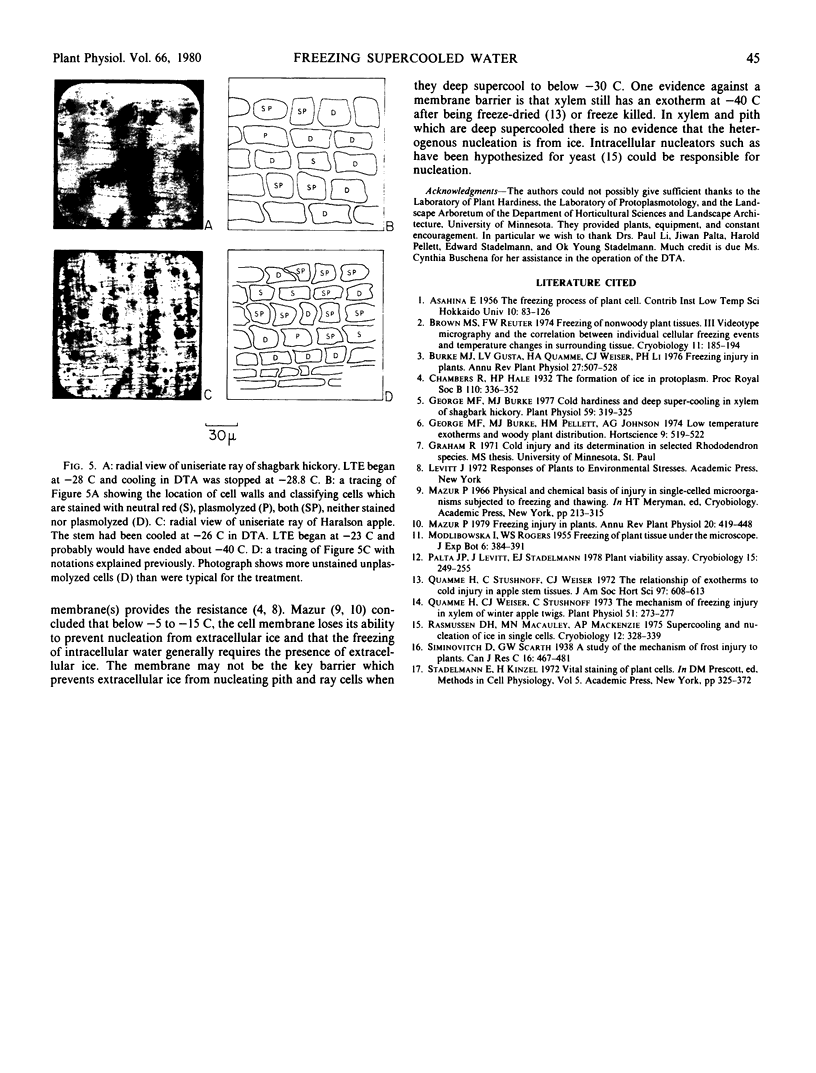
Images in this article
Selected References
These references are in PubMed. This may not be the complete list of references from this article.
- Brown M. S., Reuter F. W. Freezing of nonwoody plant tissues. III. Videotape micrography and the correlation between individual cellular freezing events and temperature changes in the surrounding tissue. Cryobiology. 1974 Jun;11(3):185–191. doi: 10.1016/0011-2240(74)90092-3. [DOI] [PubMed] [Google Scholar]
- George M. F., Burke M. J. Cold hardiness and deep supercooling in xylem of shagbark hickory. Plant Physiol. 1977 Feb;59(2):319–325. doi: 10.1104/pp.59.2.319. [DOI] [PMC free article] [PubMed] [Google Scholar]
- Palta J. P., Levitt J., Stadelmann E. Q. Plant viability assay. Cryobiology. 1978 Apr;15(2):249–255. doi: 10.1016/0011-2240(78)90035-4. [DOI] [PubMed] [Google Scholar]
- Quamme H., Weiser C. J., Stushnoff C. The mechanism of freezing injury in xylem of winter apple twigs. Plant Physiol. 1973 Feb;51(2):273–277. doi: 10.1104/pp.51.2.273. [DOI] [PMC free article] [PubMed] [Google Scholar]
- Rasmussen D. H., Macaulay M. N., MacKenzie A. P. Supercooling and nucleation of ice in single cells. Cryobiology. 1975 Aug;12(4):328–339. doi: 10.1016/0011-2240(75)90006-1. [DOI] [PubMed] [Google Scholar]



